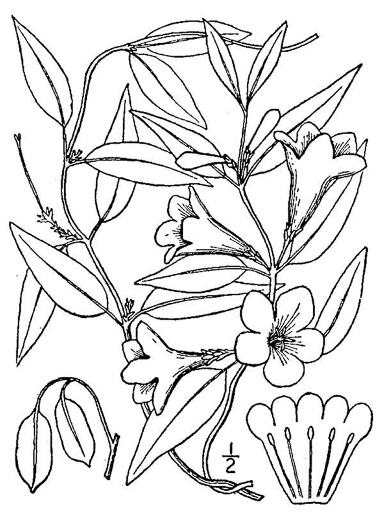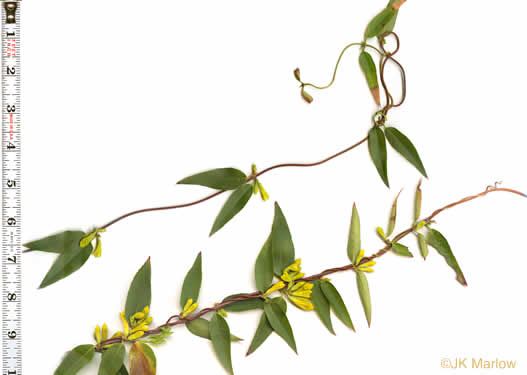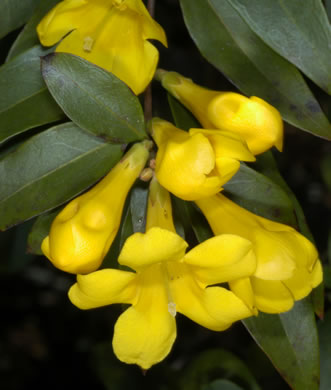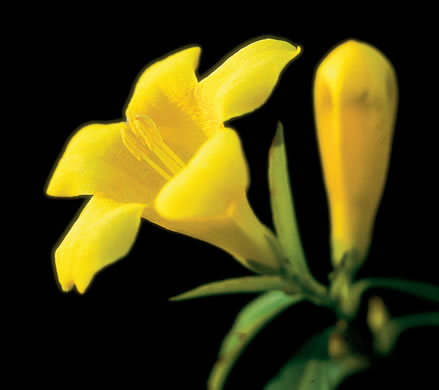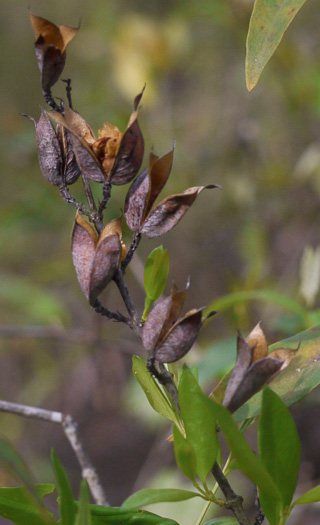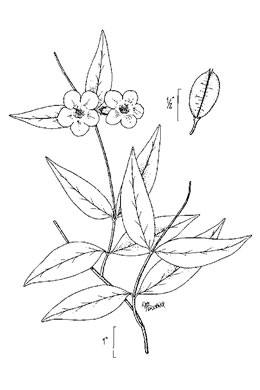Hovering over an image will enlarge it and point out features (works better on desktop than on mobile).
![]() A camera indicates there are pictures.
A camera indicates there are pictures.
![]() A speaker indicates that a botanical name is pronounced.
A speaker indicates that a botanical name is pronounced.
![]() A plus sign after a Latin name indicates that the species is further divided into varieties or subspecies.
A plus sign after a Latin name indicates that the species is further divided into varieties or subspecies.
Most habitat and range descriptions were obtained from Weakley's Flora.
Your search found 2 taxa in the family Gelsemiaceae, Jessamine family, as understood by Weakley's Flora.

![]()
![]() Common Name:
Carolina Jessamine, Yellow Jessamine
Common Name:
Carolina Jessamine, Yellow Jessamine
Weakley's Flora: (4/24/22) Gelsemium sempervirens FAMILY: Gelsemiaceae
SYNONYMOUS WITH PLANTS National Database: Gelsemium sempervirens FAMILY: Loganiaceae
SYNONYMOUS WITH Vascular Flora of the Carolinas (Radford, Ahles, & Bell, 1968): Gelsemium sempervirens 154-01-001 FAMILY: Loganiaceae
Habitat: In a wide range of habitats, from swamp forests to dry uplands and thickets, also commonly planted as an ornamental
Common (uncommon in Mountains of GA & SC) (rare in Mountains of NC)
Native to the Carolinas & Georgia

![]() Common Name:
Swamp Jessamine
Common Name:
Swamp Jessamine
Weakley's Flora: (4/24/22) Gelsemium rankinii FAMILY: Gelsemiaceae
SYNONYMOUS WITH PLANTS National Database: Gelsemium rankinii FAMILY: Loganiaceae
SYNONYMOUS WITH Vascular Flora of the Carolinas (Radford, Ahles, & Bell, 1968): Gelsemium rankinii 154-01-002 FAMILY: Loganiaceae
Habitat: Blackwater river swamps, Atlantic white cedar swamps along streams
Common in GA Coastal Plain (uncommon in Carolinas)
Native to the Carolinas & Georgia
Your search found 2 taxa. You are on page PAGE 1 out of 1 pages.

